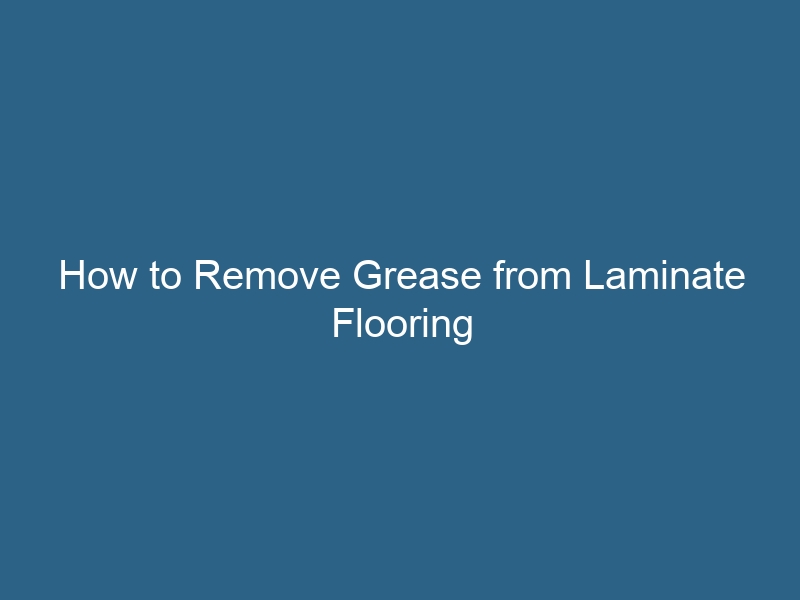Quck answer
Laminate flooring is a popular choice for many homeowners due to its affordability and durability. However, one common issue with laminate flooring is how to effectively remove grease stains. Here are some simple steps to get grease off laminate flooring:
1. Start by blotting up any excess grease with a clean cloth or paper towel. Be careful not to spread the grease further.
2. Mix a solution of warm water and a mild dish soap in a bucket or spray bottle.
3. Dampen a clean cloth or sponge with the soapy water and gently scrub the grease stain. Avoid using excessive water, as it can damage the laminate.
4. Rinse the cloth or sponge with clean water and wipe away any soap residue from the floor.
5. Dry the area thoroughly with a clean towel or allow it to air dry.
Following these steps should help you effectively remove grease stains from your laminate flooring, keeping it looking clean and beautiful.
Laminate flooring is a versatile and popular material for floors because it is durable, affordable, and easy to clean. It is commonly used in high-traffic areas such as kitchens, bathrooms, laundry rooms, and mudrooms.
However, laminate flooring tends to collect grease and buildup over time, especially in areas that are frequently used. Luckily, there are inexpensive ways to clean grease off laminate floors.
Cleaning a Laminate Floor
Many people wonder about the best way to clean their kitchen floors. Cleaning a laminate floor is quite simple. Most of the time, you can easily clean laminate floors with water, dish soap, or an all-purpose cleaner. It is recommended to clean laminate floors daily and to address spills immediately to prevent sticky substances from building up.
Before using any wet cleaner on your laminate floor, use a soft-bristle broom to sweep away any dust, debris, crumbs, or particles that may have accumulated in the corners or under cabinets. Clearing the surface of the laminate floor is the first step to achieving a thorough clean.
Once you have removed any hard debris, wipe the floor with a microfiber cloth before applying any laminate floor cleaner. The microfiber cloth will pick up dust particles, dirt, and hair that may have been missed by the broom, allowing the laminate floor cleaner to work more effectively.
Cleaning Laminate Floors with Vinegar
Sometimes, you may notice that your laminate floor feels greasy. This is often because you may not have noticed the buildup that has accumulated on the surface over time. Oil, grease, dirt, dust, and grime can gradually build up on the laminate floor, initially appearing invisible.
While laminate floor cleaners can give the floor a shine, they may not effectively remove the grease that is causing the floor to feel greasy. Cleansers need to have a certain level of acidity to effectively remove grease buildup on laminate floors.
After sweeping and wiping with a microfiber cloth, you can mop the floor with a solution of 2 parts hot water and 1 part white vinegar. Be sure to wring out the mop to avoid saturating the floor. Laminate flooring is water-resistant, but excessive water can seep between the laminate and the subfloor, causing the laminate to peel or curl.
Degreaser for Laminate Floor
After mopping the floor with the vinegar solution several times, rinse the mop in cool, clear water and repeat the process. The white vinegar will also disinfect and deodorize the floor while removing any greasy spots. You may need to repeat the process multiple times to achieve the desired level of cleanliness. Vinegar’s acidity helps cut through layers of grease and restores the floor’s original sheen.
If the white vinegar solution does not effectively remove all of the grease, you can consider purchasing a commercial-grade laminate cleaner. These cleaners may be more expensive, but they are likely to get the job done. For stubborn greasy spots, you may need to use a scrub brush or a sponge with a scrub pad.
After completing the task, use the mop to go over the floor once more, this time applying a layer of vinegar. Then, use a cloth to dry the edges of the floor to prevent any water from seeping beneath the seams.


